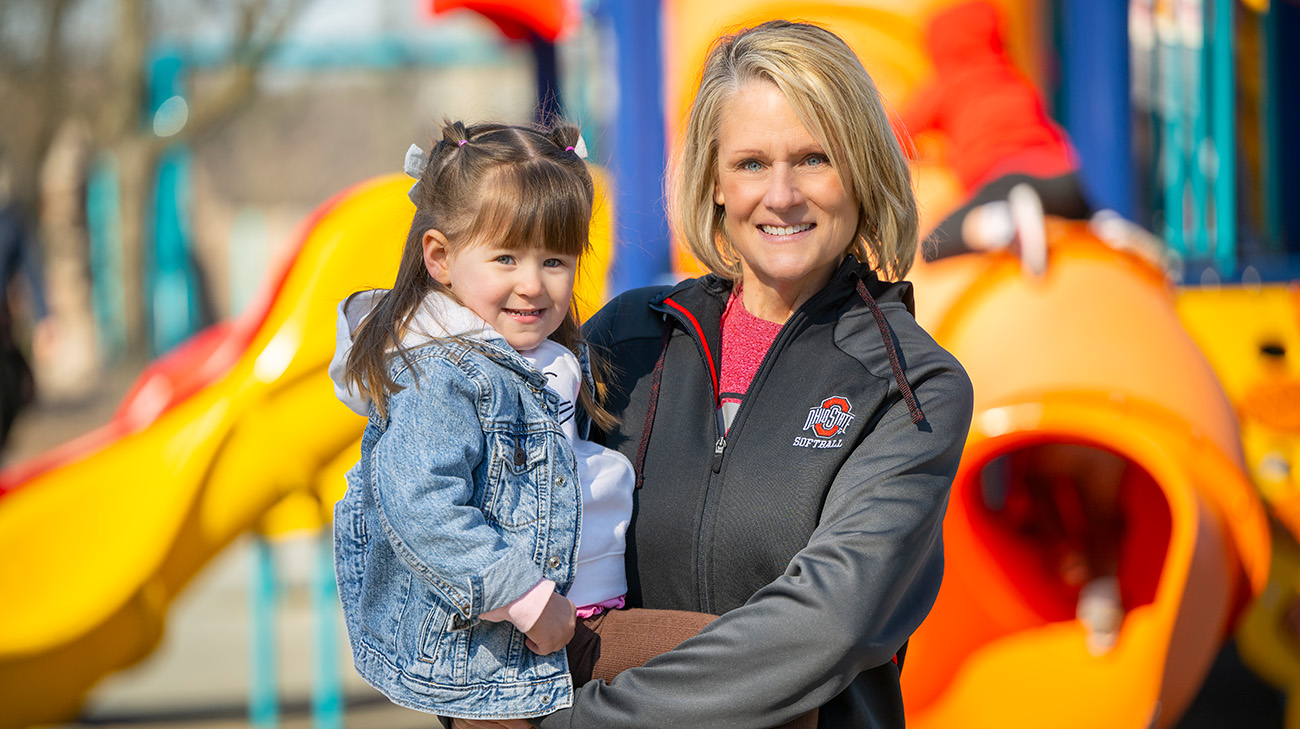
Leading a healthy lifestyle is an important part of Marianne Galang’s life. The 55-year-old from Independence has been a clinical dietician at Cleveland Clinic for 24 years. And when she’s off the clock, she enjoys going to the gym, walking her dogs and chasing after her grandchildren.
Towards the end of 2017, Marianne started to have severe pain in her back that traveled down her legs and caused numbness, discomfort and pain when walking. She made an appointment with her primary care physician in January 2018.
“My pain was so severe that there were many things I couldn't do; it was frustrating. I was missing out on a lot of activities that I loved, like working out, and I couldn’t stand long at events,” recalls Marianne. “I would walk 10 feet and my back and legs would be numb and painful.”
In April 2018, an MRI revealed that Marianne had two spinal issues — spinal stenosis and spondylolisthesis.
Spinal stenosis happens when the space around the spinal cord becomes too narrow, irritating the spinal cord and/or the nerves that branch off it. It causes symptoms like back or neck pain and tingling in the arms or legs.
“My pain was so severe that there were many things I couldn't do. It was frustrating.”
Spondylolisthesis is a condition involving spine instability, which means the vertebrae move more than they should. A vertebra slips out of place onto the vertebra below. It may put pressure on a nerve, which could cause lower back pain or leg pain.
She began to see a certified physician assistant (PA-C) at Cleveland Clinic’s Center for Spine Health. Over the next few months, Marianne was prescribed medications, steroid injections and physical therapy to alleviate those combined issues — but nothing helped.
So, the PA-C decided it was time for Marianne to see Michael Steinmetz, MD, a neurosurgeon and director of the Center for Spine Health. And, in September 2018, Marianne had her first appointment with Dr. Steinmetz.
Because of her diagnoses and lack of luck with traditional medical interventions, Dr. Steinmetz said spine surgery was her only option. He also asked Marianne if she’d be interested in being part of a clinical trial for a new device that could help alleviate her pain.
“Marianne wasn’t guaranteed she’d get the new device during surgery as participants are part of a random draw for the device, but we were hopeful,” explains Dr. Steinmetz.
In February 2019, Marianne had a laminectomy on her spine to remove the lamina, or “bony arch,” that protects and supports the back part of the spinal cord on the vertebrae. This relieves the pressure on the nerves and spinal cord by making more room in the spinal canal (the tunnel that holds the spinal cord).
She also had lumbar decompression surgery using the Total Posterior Spine (TOPS™) System — the device from the clinical trial Marianne had hoped she’d get. The TOPS System is a spinal implant designed to stabilize the lower spine and maintain range of motion after surgery to relieve compressed nerves.
“TOPS is a safe and effective alternative to lumbar spinal fusion in patients with grade I degenerative spondylolisthesis, offering pain relief and stability without sacrificing physiological movement,” says Dr. Steinmetz.” It’s beneficial when one bone has shifted forward, typically L4 and L5 in the lumbar spine, due to arthritis.”
Marianne’s recovery was about six to eight weeks. During that time, she worked with a physical therapist.
“Marianne is a trailblazer. Her willingness to participate in the research study helped pave the way for TOPS to get FDA approval,” says Dr. Steinmetz. “She always has a positive outlook and was very involved in her care. Both of which helped her to do well after surgery.”
Marianne saw Dr. Steinmetz for a post-surgery checkup. To adhere to the trial requirements, Marianne had six-month and one- and three-year checkups. And, recently, had her final checkup at her five-year marker.
“I was happy to be a part of the clinical study and was relieved to actually receive the TOPS device,” says Marianne. “Dr. Steinmetz and his team did a phenomenal job. It’s because of them that I got back to running, working out on the elliptical, and everything else that I would have been missing out on.”
Related Institutes: Neurological Institute

